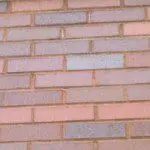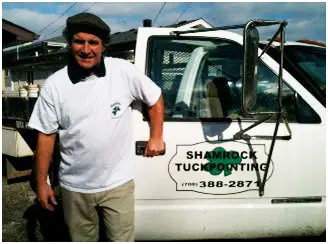Brick and Mortar Matching Makes Repairs Disappear
There is nothing worse than a brick repair that looks like a patch job. Cracks in brick are a concern and should be repaired for both structural and aesthetic reasons. But the repair shouldn’t look as bad or worse than the crack. The most common cause of a vertical crack in a brick wall is foundation settling. Before any repair is done, we have to ensure that the wall is on a solid base, so settling issues won’t cause similar problems down the road. This might require re-grading around the foundation or an evaluation of the drainage system around the building.
The second step of the repair is removing the cracked bricks. This is done very carefully so there is minimal damage to surrounding bricks. A chisel and hammer along with a masonry drill help slowly remove the affected brick and mortar.
Matching the brick and mortar is the key to an seamless repair. On a newer building, it is easier to match the brick exactly with the help of our brick suppliers. Older buildings can be a greater challenge, but almost anything is available through suppliers of salvaged brick. Another solution is to remove bricks from inconspicuous places to use in a highly visible repairs.
Mortar matching is an art, with the most important components being cement, and the type of sand used in the mortar. Other ingredients include include lime, Portland cement and dye. We typically test a few different samples, carefully measuring and recording the formulas. Experience tells us how the wet mortar will look after it cures, but we can also do some quick drying methods. We use the age of the building to guide us in determining the type of mortar.
Not all tuckpointing contractors will be as concerned as you are about brick and mortar matching. Make your expectations known at the outset, and check references. It’s the only way to ensure that a brick crack doesn’t turn into an even-worse looking repair.




